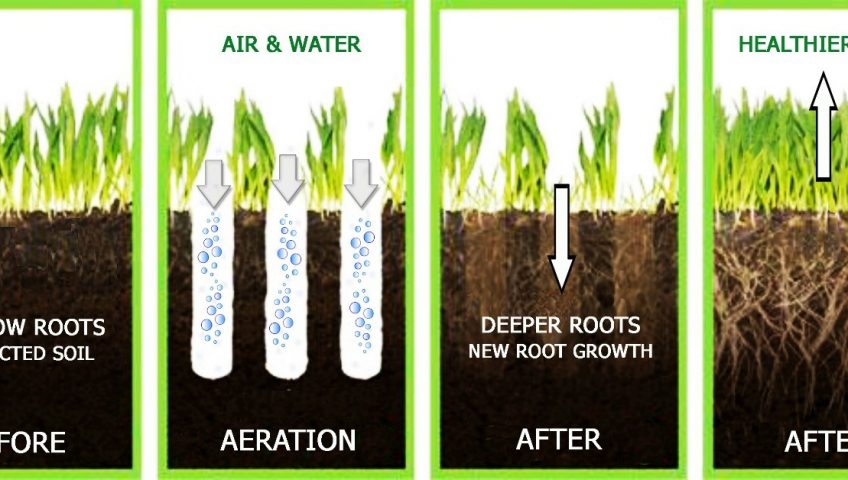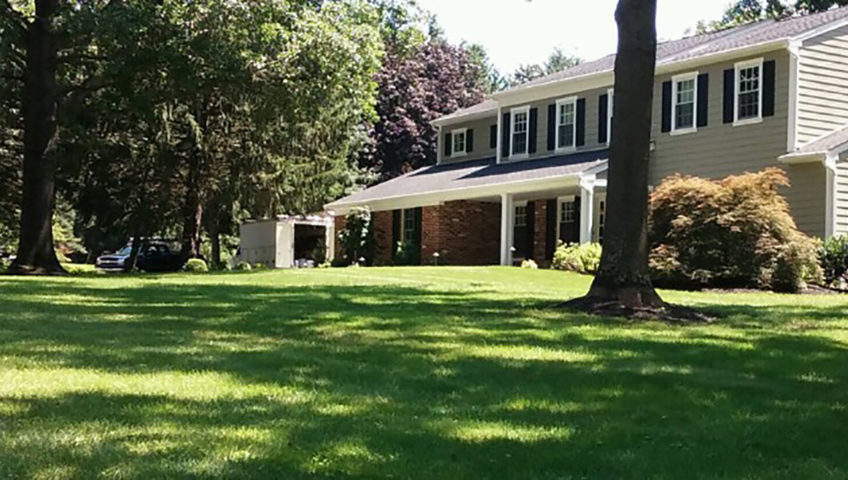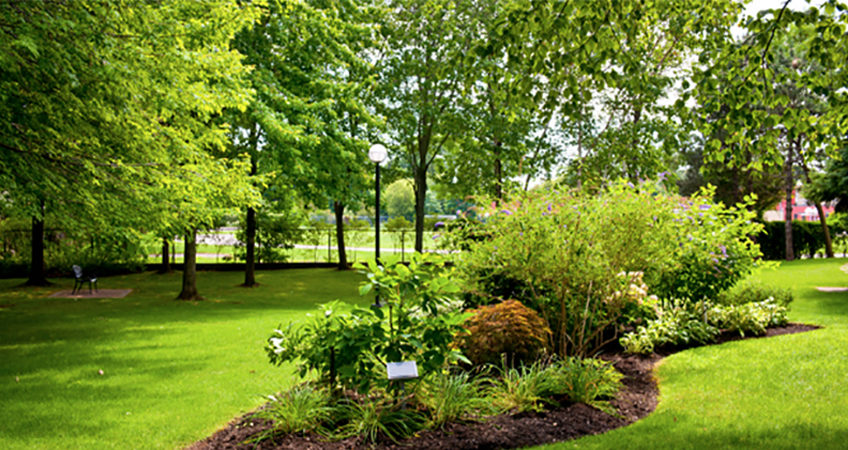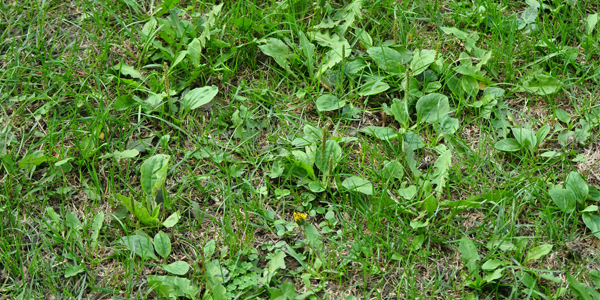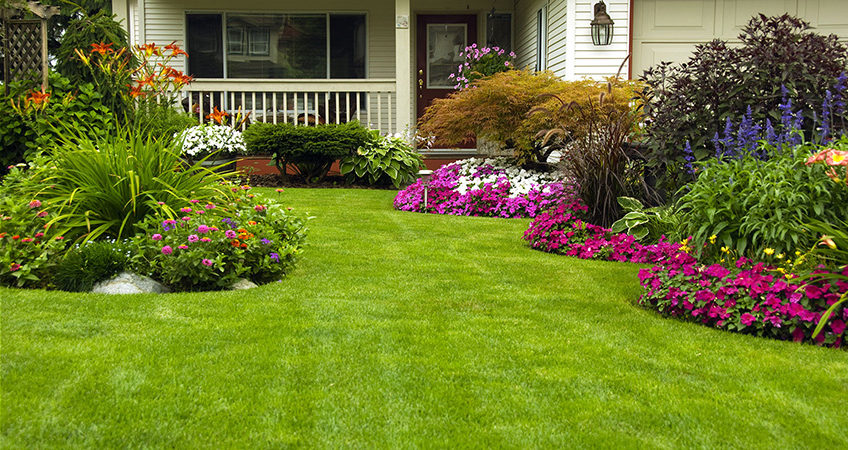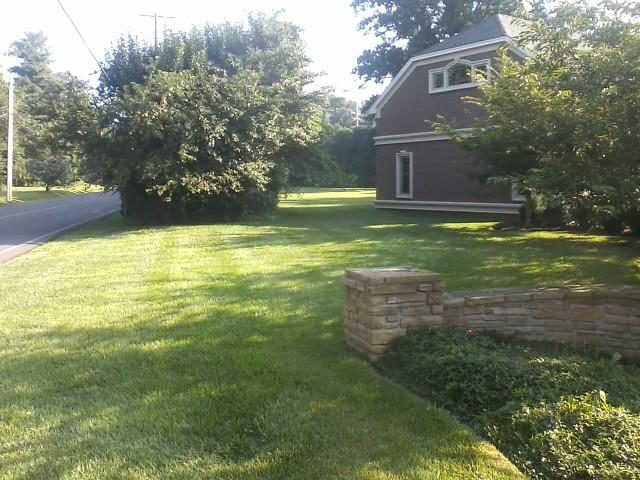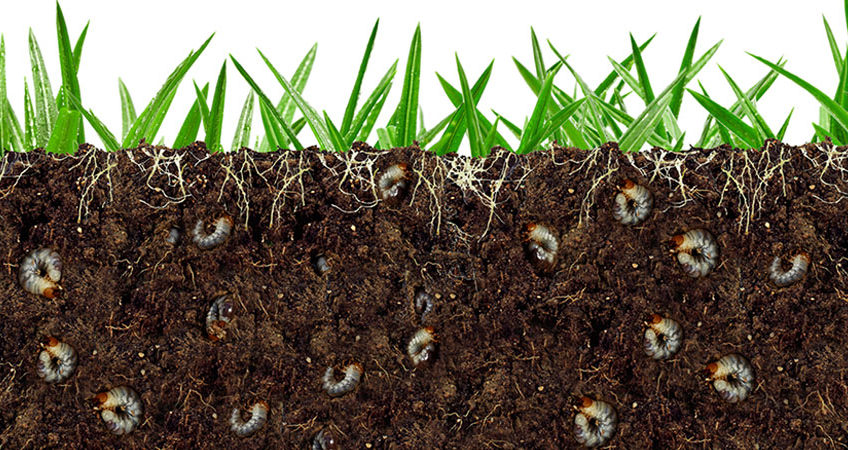
Enhance Lawn Health with Core Aeration and Overseeding
To maintain a healthy, beautiful lawn that grows attractively throughout the warmer months, intentional planning and treatment are needed during the off-season. Lawn care doesn’t begin in early spring. It’s actually a year-round process that prepares the turf and grass roots for strong new growth.
Once the summer temperatures begin to cool, maintenance for next year’s healthy grass begins. September and October are ideal months for lawn treatments like core aeration and overseeding.
What are Core Aeration and Overseeding?
The processes of core aeration and overseeding work well together to promote a healthy dormant period for grass during the colder months. These treatment techniques allow the soil to absorb more air, water, nutrients, and new grass seed so that spring growth gets off to a great start.
What is Core Aeration?
The turf that supports a lawn takes a beating every year. Temperatures, mowing, activity, and weather all cause the soil to become compacted. This means that air gets pushed out of the turf, leaving less room for moisture and sunlight to reach deep into the ground. Without these necessary elements, nutrients aren’t able to generate in the soil and feed the roots. Over time, this affects the health of the grass roots, and the lawn will grow less productively each year.
Core aeration literally opens up the soil to allow air, moisture, and light to work their way back in. An aerator is a machine that reaches into the lawn and removes small cylinders of grass and soil. These cylinders or plugs are about three inches long and a half inch in diameter. Aerator machines can be either manually or power operated.
The removal of the cores clears space for the remaining soil to loosen up. It expands to fill the holes, which then makes room for air, water, and light to promote effective growth. Core aeration also cleans up the layer of thatch that tends to spread across lawns. Thatch is dead grass, leaves, roots, and stems that build up around your grass. Thatch is protective up to a certain point. If it becomes overgrown, however, it will block water and nutrients just like compacted soil. Core aeration breaks down thatch growth so that it continues to be beneficial.
Homeowners who treat their lawn with core aeration typically notice that it has fewer brown, dead-looking areas when it starts growing again in the spring. Regular aeration also results in fewer pests and less fungus in the warm months. The best time to aerate a lawn is in early autumn when the soil is still fairly warm, but not too dry.
What is Overseeding?
When roots are damaged from soil compaction, spring growth often comes in less uniformly. Homeowners notice bare spots and uneven growth. Overseeding means to spread new grass seed all over the lawn, including over existing grass. This process allows the seeds to settle in during the cold months so that they take root and start growing at the start of spring.
Overseeding will help a lawn come in more evenly from the very beginning of the new growing season. This prevents homeowners from having to play catch up over the course of several weeks in the spring while they wait for those bare spots to recover. The new seeds also provide a protective layer over the existing grass, so fewer weeds will grow.
It’s best to take care of overseeding after the busy outdoor season is finished. Most of the activity that wears down a lawn is done for the year, which prevents the new seeds from being disrupted from where they were spread.
Combine Core Aeration and Overseeding for Maximum Benefits to Your Lawn
Core aeration and overseeding, when applied at the same time, prepare a lawn for an excellent upcoming growing season. Core aeration is done first to loosen the soil, create air pockets, and allow nutrients to start moving through once again. Overseeding then fills the refreshed soil and helps to thicken and protect the existing grass around it. Because of the aeration, the new seeds fall deeper into the soil where they develop strong roots.
While autumn is ideal, core aeration and overseeding can be done at various times throughout the year, as long as the grass is in a growth cycle. It should be avoided during the winter when grass is dormant, and during the hottest and driest parts of summer.
If a lawn has been left alone for several years and has many dead patches or weeds, a homeowner might want to go ahead and get started on healthy treatments right away. Or if homeowners simply could not get their aeration and overseeding scheduled during autumn for various reasons, it is better to do the maintenance in another season for the benefit of the soil. Additionally, aeration and overseeding should be done following new home construction, even if the builders applied grass seed. The construction equipment certainly compacted the soil, so the treatment will improve the lawn’s initial growth.
Lawn Care Professionals Complete Core Aeration and Overseeding Efficiently
The two-part process of core aeration and overseeding is intensive and time-consuming work. Homeowners with very small yards may be able to complete this project on their own each year. For homes with larger lawns, especially those with both front and back yards, these tasks can quickly become overwhelming. Without professional grade equipment, aerating usually takes far longer than most homeowners are willing to commit.
Blue Grass Lawn Service specializes in these lawn treatments as part of our Superior Lawn Care Service Plan. We use extra heavy core aerators, which we have found to create optimal seeding conditions. With over 40 years of experience as lawn care experts, we have developed a highly effective process for core aeration and overseeding that produces consistently vibrant, healthy growth. Contact us to schedule your core aeration and overseeding treatment, and to learn more about our full schedule of year-round lawn care services. We proudly serve homeowners in Montgomery and Bucks Counties in Pennsylvania, as well as Mercer and Middlesex Counties in New Jersey.

